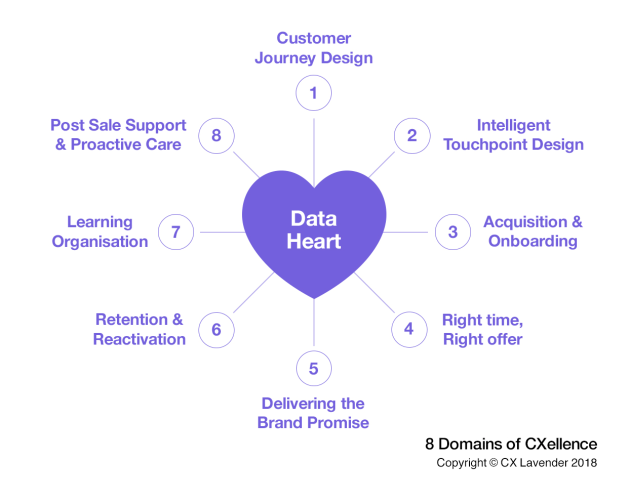
As a growing number of organisations realise that business success relies on the experience they provide their customers, attention is turning to the question of what constitutes a great customer experience.
The answer is critical in today’s competitive landscape. Getting CX right means increased customer satisfaction, reduced customer churn, increased revenue and happier employees. Getting it wrong could spell oblivion.
There are many factors that shape the experience your customers receive when they come into contact with your organisation and it’s important to tick all of the boxes. At Lavender, we’ve identified eight crucial steps along the journey to consummate customer satisfaction. Think of it as the definitive checklist for effective CX.

1. Customer Journey Design
Let’s go back right to the start. Customer journey design is an essential part of improving your customers’ experience.
Defining the steps that customers (or prospects) need to go through when interacting with your business or brand makes it easier to identify their needs, pain points and emotions, and provides the necessary insights to design frictionless experiences that create value for your customers and value for your organisation.
The aim is to provide an experience that is pleasant for the customer while at the same time allowing the business to transact effectively.
2. Intelligent Touch Point Design
Wherever a customer or prospect touches your organisation – whether through retail, web page, kiosk application, IVR system, mobile application, display or email – you must provide a thoughtful and effective interface at every touch point.
With intelligent use of data, it’s possible to build powerful experiences that set your organisation apart so if a customer – or prospect – does something in one place, it’s recognised in another.
3. Acquisition & Onboarding
We all know customer acquisition is important but are you doing all you can to maximise your prospect conversion?
Attracting all the customers in the world doesn’t mean you can hang on to them – the best way to improve your chances is to deliver a seamless and engaging onboarding experience by providing the right information at the right time, and not overwhelming or scaring customers away.
It’s important to get it right the first time, because you may not get another chance.
4. The Right Offer at the Right Time
Impactful communication is being able to say the right thing, in the right way, using the right channel, to the right people, at the right time.
By interpreting their data into a plan per customer, you’ll ensure your customers feel that their information is being used intelligently and that your programs of communication are useful and compelling.
Translating this personalised approach across the maximum number of people – and ensuring this message is heard loud-and-clear – is the most effective way to reach your marketing, sales and support objectives.
5. Delivering on the Brand Promise
Every business has a set of products or services that represent the core value proposition of the organisation. Where it can all go pear shaped, however, is a failure to deliver on the brand promise.
It’s therefore critical to ensure that the customer interaction – touch point and message – is aligned with your ‘core brand promise’, and is as easy and enjoyable as possible.
6. Retention & Reactivation
Retention marketing – keeping customers engaged and interested in your products – has always been important, and more so now than ever before. Generic loyalty programs and discounts will no longer cut it.
As marketers, we now have the ability to use customers’ data effectively, and respectfully, to ensure they experience your brand’s reward and recognition benefits as part of your product and service experience – as opposed to a peripheral bolt-on loyalty program.
The key is to design ‘always on’ integrated retention activities, engrained in your service, that keep your customers feeling engaged and valued.
7. Build a learning culture
In a world where constant change is a given, no business can afford to slacken off when it comes to business intelligence, and that means becoming a better data-driven organisation.
Building a learning culture where the value to customer and value to business are made clear ensures that the customer remains at the heart of your business.
Live management reporting should be available right through the business for marketing, sales, product sales, inventory, customer and staff. With excellent visualisation, teams should be able to see the real-time effect of business activity and make fast, informed decisions.
8. Post Sale Support & Proactive Care
Predicting customer satisfaction and having a pre-determined strategy – a plan – worked out in advance, is the key to successful customer care.
Whether simply creating the customer check-in that everything is ok, or providing sophisticated troubleshooting and support services – this part of the customer experience determines the building base for future cross-selling or upselling.
Just as importantly, by building strong customer relationships, proactive care not only helps you keep your customers – it also converts them into positive referrals.
CX Lavender founder and chairman Will Lavender


